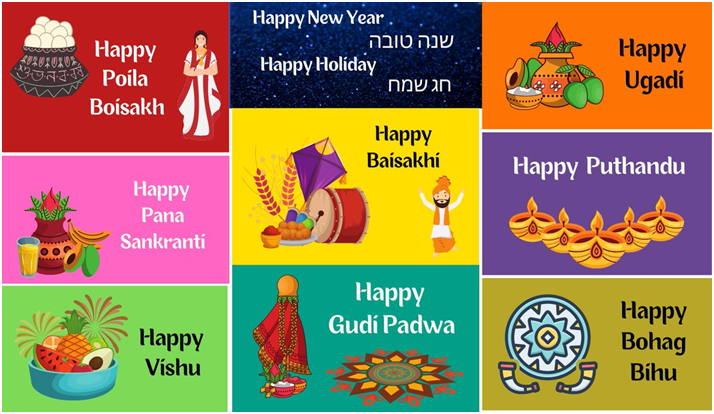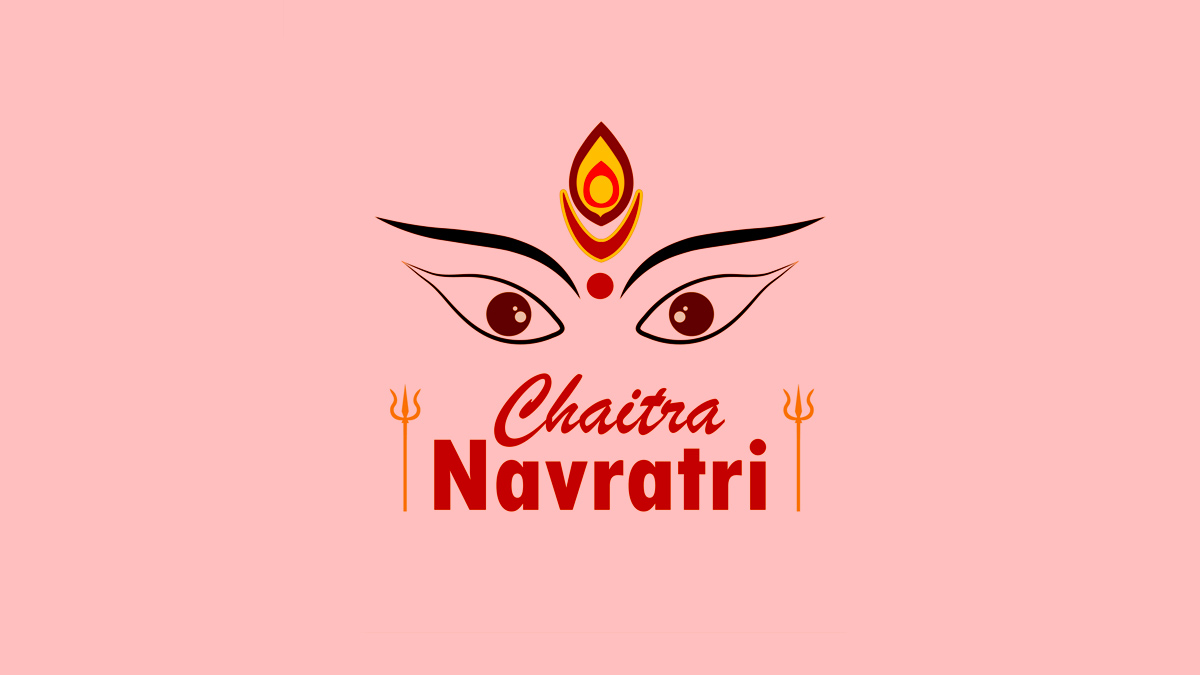Harvest Festival Season (Baisakhi, Poila Baisakh, Bohag Bihu, Vishu, Puthandu and Gudi Padwa)
Baisakhi, also known as Vaisakhi, is a vibrant and joyous festival celebrated with great enthusiasm in different parts of India. It holds immense significance for various communities and religions, marking the harvest season and the beginning of a new year. Baisakhi not only showcases the cultural diversity of the country, but also brings people together in celebration and mutual respect.
In Punjab, Baisakhi is a major festival and holds immense cultural and religious importance. The festival commemorates the formation of the Khalsa Panth in 1699, when the tenth Sikh Guru, Guru Gobind Singh, established the Khalsa order. The city of Amritsar, home to the iconic Golden Temple, is the center of Baisakhi celebrations in Punjab. Devotees flock to gurdwaras to offer prayers, listen to religious hymns, and participate in processions known as Nagar Kirtans. These processions involve people dressed in traditional attire, singing hymns, and displaying martial arts skills. The highlight of Baisakhi in Punjab is the traditional folk dances, such as Bhangra and Gidda, performed in fields and village squares. These energetic dance forms are accompanied by the beats of the dhol, a large drum, and to the sound of folk songs celebratingtheharvest.
In West Bengal, Baisakhi coincides with the auspicious occasion of Bengali New Year, also known as “Poila Baisakh.” The day is celebrated with great fervor, with people engaging in cultural programs, traditional rituals, and feasts. The streets of Kolkata come alive with processions, music, and dance performances. People dress in traditional attire, women wear beautiful sarees, and men sport dhotis and kurta. The highlight of the Baisakhi celebrations in West Bengal is the traditional folk dance known as “Rabindra Nritya Natya,” performed by artists and locals. The festival is also an occasion to seek blessings from deities, visit temples, and exchange greetings and sweets with loved ones.
Bohag Bihu and Vishu are two significant festivals celebrated in different regions of India, but both hold immense cultural and traditional importance. These festivals bring together people from various communities to rejoice in the spirit of harmony and unity.
Bohag Bihu, also known as Rongali Bihu, is celebrated mainly in the state of Assam. The festival marks the beginning of the Assamese New Year and falls in mid-April. It is a seven-day festival that showcases various festivities, including dancing, singing, and traditional games.
During Bohag Bihu, people wear new clothes and offer prayers to the deities for a prosperous year ahead. They also express their gratitude to Mother Nature for the bountiful harvest. The highlight of this festival is the Bihu dance, performed by young men and women in traditional attire. The vibrant music, rhythmic steps, and exquisite costumes create an electrifying atmosphere. Vishu, on the other hand, is predominantly celebrated in the southern state of Kerala. It usually falls on or around April 14th and marks the beginning of the Malayalam New Year. Vishu is derived from the Sanskrit word “Vishuva,” which means equal. It symbolizes the balance of nature that leads to a prosperous and harmonious life.

The festival commences with “Vishukkani,” which is an arrangement of auspicious items like ripened fruits, vegetables, flowers, and a mirror in a traditional brass vessel. The elders of the family carefully arrange this display near the family deity the previous night. On the day of Vishu, everyone wakes up early in the morning and first looks at the Vishukkani. It is believed that this vision sets the tone for the entire year.
Family members exchange gifts, usually consisting of money known as “Vishu Kaineettam,” to bless one another with good fortune. People visit temples and seek the blessings of the deities. Special feasts, known as “Sadya,” are prepared, and traditional games and cultural event are organized across Kerala.
In Tamil Nadu, Baisakhi is celebrated as “Puthandu,” which marks the Tamil New Year. The people of Tamil Nadu begin their day by visiting temples, seeking blessings, and performing traditional rituals. Houses are decorated with intricate Kolam designs, and families indulge in a grand feast known as “Pongal.” Puthandu is a time to appreciate and embrace the rich cultural heritage of Tamil Nadu, with music, dance, and drama performances held across the state. Traditional games and colorful processions add to the festive spirit, making it a memorable occasion for everyone.
In Maharashtra, Baisakhi is celebrated as “Gudi Padwa,” which is also the Marathi New Year. On this day, people in Maharashtra erect a “Gudi” outside their homes. The Gudi comprises a decorated pole with a bright saffron cloth, topped with a garland, neem leaves, and a metal pot. It symbolizes good luck and prosperity for the upcoming year. People dress in new clothes, visit temples, and exchange sweets and gifts with friends and family. The festivities also include cultural performances, traditional music, and dance shows, showcasing the rich heritageofMaharashtra. Baisakhi, celebrated in different parts of India, not only brings people together in joyous celebrations but also signifies the importance of agriculture and the unity of diverse cultures. It serves as a reminder of our shared cultural identity and promotes the spirit of brotherhood and harmony. Baisakhi is not just a festival; it is a celebration of life, renewal, and gratitude for nature’s bounties.
By: Ms. Ramona Rai (Duty Supervisor – Bagdogra)




